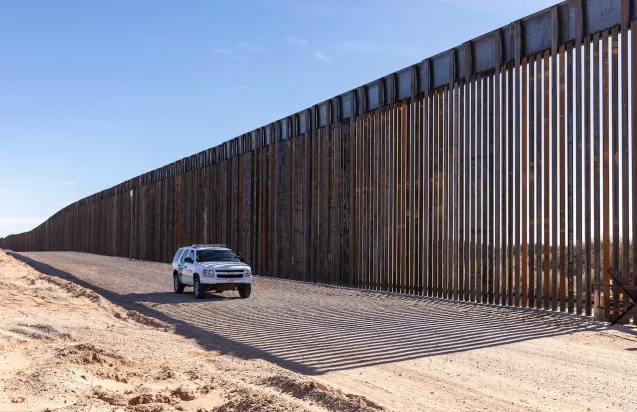Russia’s invasion of Ukraine is straining European borders, which has led to the implementation of certain institutional changes, especially in Eastern and Western European countries. In this context, the United States has also expressed its solidarity with the invaded country and has announced that it will accept 100,000 Ukrainian refugees and will donate billions of dollars to the country. Meanwhile, the aid pledged by Washington for the development of Central America has yet to materialize.
A migration crisis in Europe
The current crisis in Ukraine implies a massive mobilization of refugees, mainly in Europe, where over 3.5 million refugees are estimated until the moment, according to the United Nations High Commissioner for Refugees (UNHCR). This new crisis highlights the need to promote higher inclusion and respect for the refugee’s human rights, in a context where migrants from all over the world suffer all sorts of abuses such as human trafficking, prostitution, and sexual assault.
Such crisis has led the Council of the European Union to decide to activate for the first time the Directive 2001/55/EC, whereby Ukrainians will be able to live, work, and study legally for one year in the European Union, extendable to three years, without having to apply for international protection. This reflects a change in the legal situation and another way of managing the huge influx of refugees, estimated to reach about 6.5 million. The aforementioned Directive was approved in 2001 and in its 21 years of existence had never been activated.
This is a necessary policy in a framework where the borders of Poland, Slovakia, and Romania with Ukraine have become regions with a humanitarian, social, health, and cultural dynamic of great intensity. Poland has received more than half of the refugees from Ukraine, about 2.17 million, reflecting a strong sense of humanitarianism and support for vulnerable populations.
What are the lessons for U.S.-Mexico border management?
Following the outbreak of the armed conflict in Ukraine, on March 3, the U.S. government granted Temporary Protected Status (TPS) to Ukrainian nationals already in the country. Besides, the U.S. government has announced that it will also take in up to 100,000 Ukrainian and other refugees who have fled Ukraine following the Russian invasion and the priority is to take in those migrants with family members in the United States.
To accomplish this commitment, the U.S. will include a refugee admissions program, humanitarian permits and immigrant and non-immigrant visas. In addition, according to an administration spokesperson, the White House will not have to ask Congress to extend the current annual refugee cap, which currently stands at 125,000.
Prior to the war, migrants from Ukraine and Russia arrived in the United States through Mexico, as it does not require a visa for these citizens, but only an electronic travel authorization which is processed online and allows them to stay as tourists for 180 days. Therefore, in 2020, before the beginning of the crisis, more than 12,000 Ukrainians arrived in Mexico with the purpose of going to the U.S. In 2021, there were more than 28,000 and in January 2022, weeks before the beginning of the war, a considerable increase could already be observed with the arrival of 6,000 Ukrainian citizens.
It is likely that in the coming months, the arrival of Ukrainian migrants will increase. However, these numbers will continue to represent a smaller proportion of the migrants fleeing their countries as best they can to try to reach the U.S. through the southern border.
Therefore, in view of the Biden administration’s announcements, President López Obrador has criticized the prioritization of the arrival of Ukrainians and the relegation of Central American migrants, and the Central American Development Plan, in a context where continental migration has generated a humanitarian crisis. Only in the Fiscal Year 2020-2021, the U.S. detained close to 1.7 million migrants, of which almost 40% were Mexicans and 35% were Central Americans.
The Russian invasion of Ukraine has caused the U.S. government to prioritize the humanitarian crisis in Eastern Europe over migration from the south of the continent. However, this should be an opportunity for its authorities to promote an inclusive, humanitarian, and labor policy towards migrant populations from other countries, especially from the Northern Triangle.
Translated from Spanish by Janaína Ruviaro da Silva













